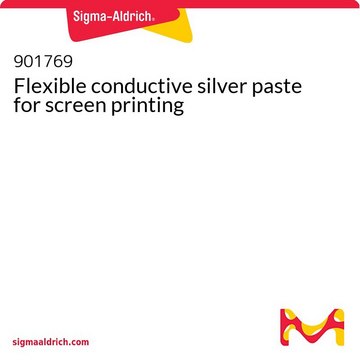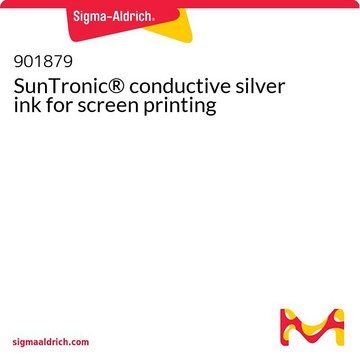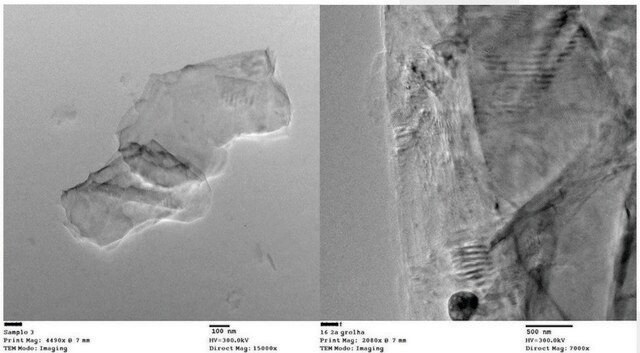901970
SunTronic® conductive graphite ink for flexographic printing
Synonym(s):
Conductive ink, Graphite/carbon ink, SunTronic® GFT4600 flexo conductive graphite ink
About This Item
Recommended Products
description
Sheet resistance: <100 Ω/sq (flexo printed on SBS board with 18 BCM anilox roll)
Specific gravity: 1.09g/cm3
form
liquid
viscosity
1300-1700 cP (Brookfield - low shear)
storage temp.
2-8°C
General description
GFT4600 is appropriate for paper and cardboard substrates and also water-receptive polymer films and provides a unique combination of high-speed printability, fast drying, and conductivity in an easy-to-use ink system. GFT4600 can also be printed on plastic films bearing a water-receptive primer
Caution
GFT4600 is a fast drying ink that will dry to the touch between 150-300 feet per minute using standard dryers found on flexographic presses. Maximum conductivity can be achieved with further drying, inline or offline, using infrared (IR) dryers, high capacity forced hot air ovens and/or heated mandrels. Optimum drying conditions should be established for particular equipment used by the customer.
GFT4600 is supplied as ready-for-use ink. Soft sediment may occur over time so thorough mixing prior to use is necessary. The ink may be diluted with water up to 3%, however sheet resistivity will increase slightly. Dilute with caution!
The below details are only a guide, and the final choice of flexo printing specifications may depend on substrate and web speed. To achieve maximum coverage, high volume anilox rolls are recommended (80-120 lpi with 14-22 BCM).
Continuous anilox rotation is required throughout the print run to avoid ink drying on flexo plate and anilox roll. GFT4600 should not be allowed to dry completely on printing equipment. Prompt cleaning with water is highly recommended. Anilox rolls should be also cleaned using a sonicating bath after each print run.
Legal Information
Storage Class
10 - Combustible liquids
wgk_germany
nwg
flash_point_f
Not applicable
flash_point_c
Not applicable
Choose from one of the most recent versions:
Certificates of Analysis (COA)
Don't see the Right Version?
If you require a particular version, you can look up a specific certificate by the Lot or Batch number.
Already Own This Product?
Find documentation for the products that you have recently purchased in the Document Library.
Customers Also Viewed
Articles
Professor Tokito and Professor Takeda share their new materials, device architecture design principles, and performance optimization protocols for printed and solution-processed, low-cost, highly flexible, organic electronic devices.
Our team of scientists has experience in all areas of research including Life Science, Material Science, Chemical Synthesis, Chromatography, Analytical and many others.
Contact Technical Service







